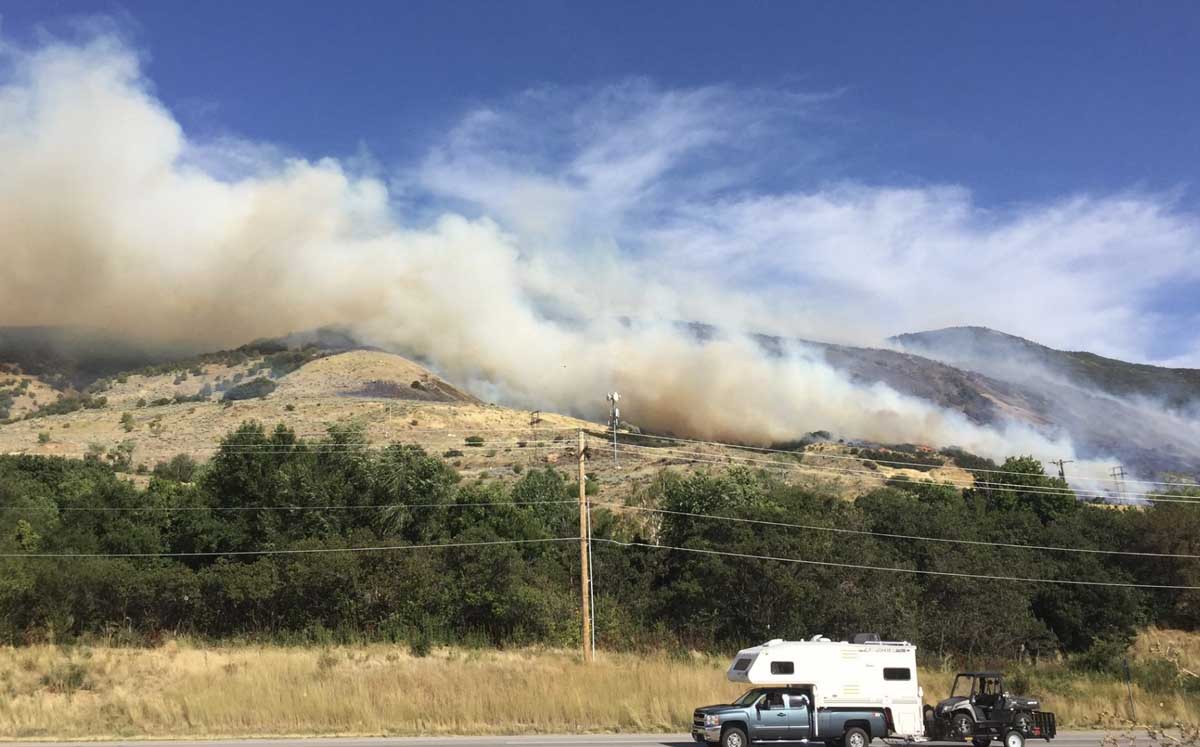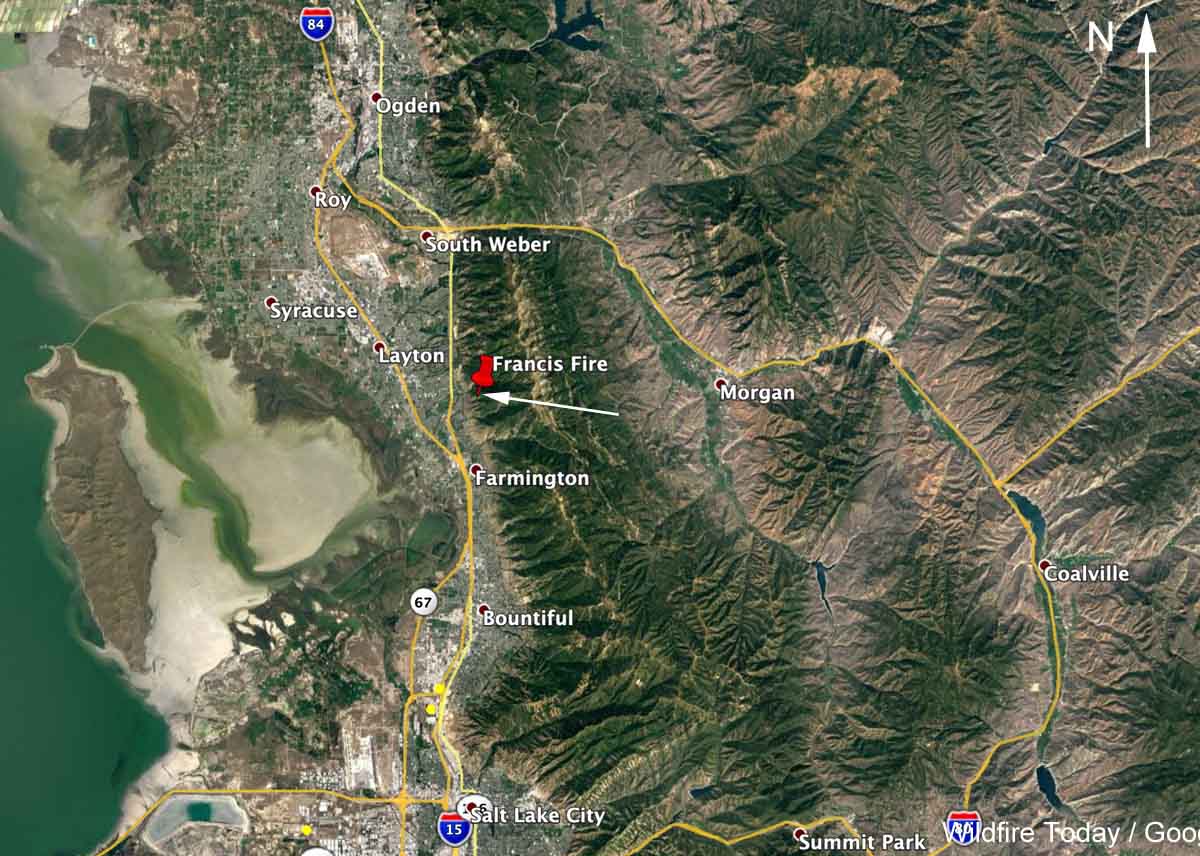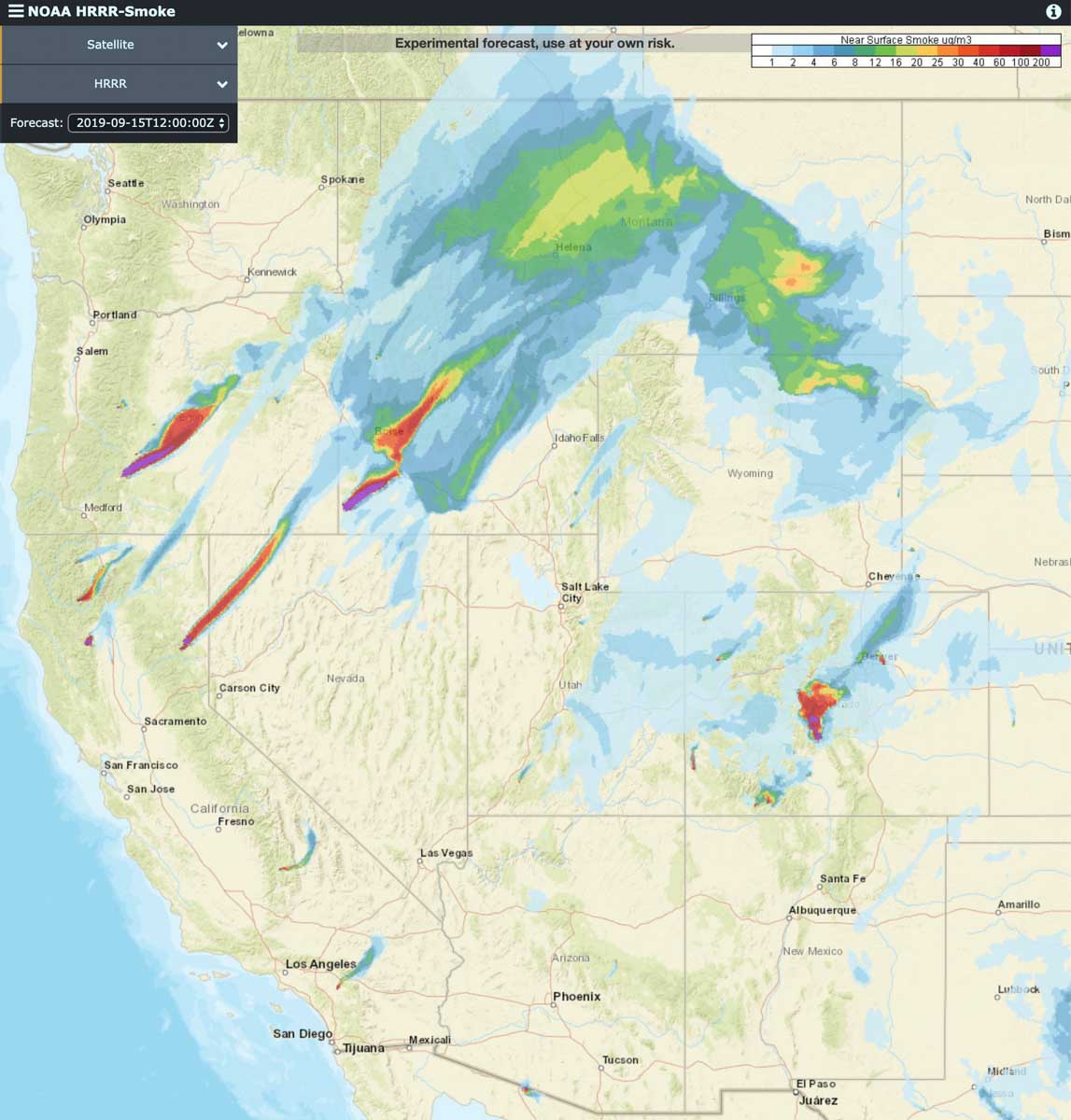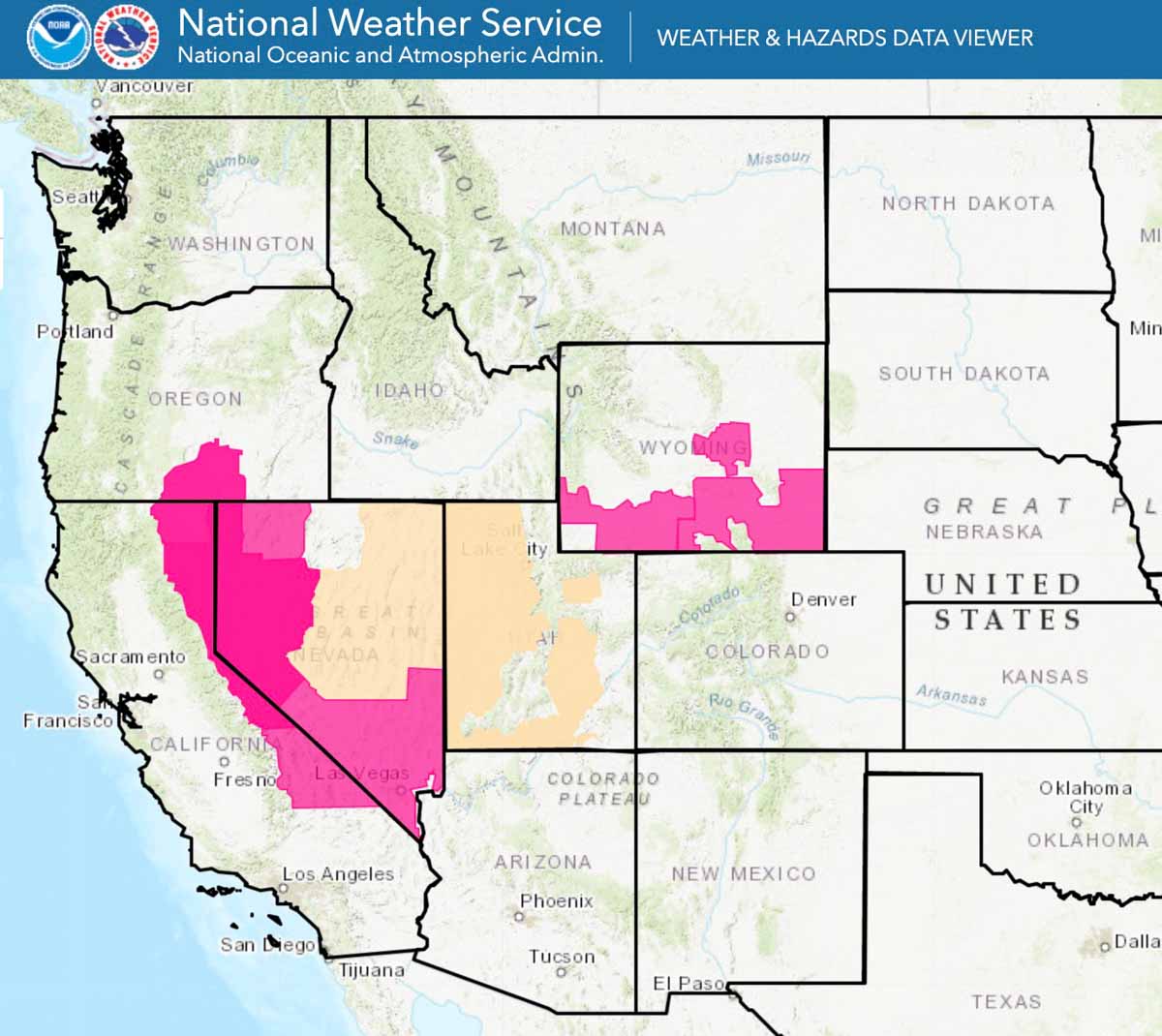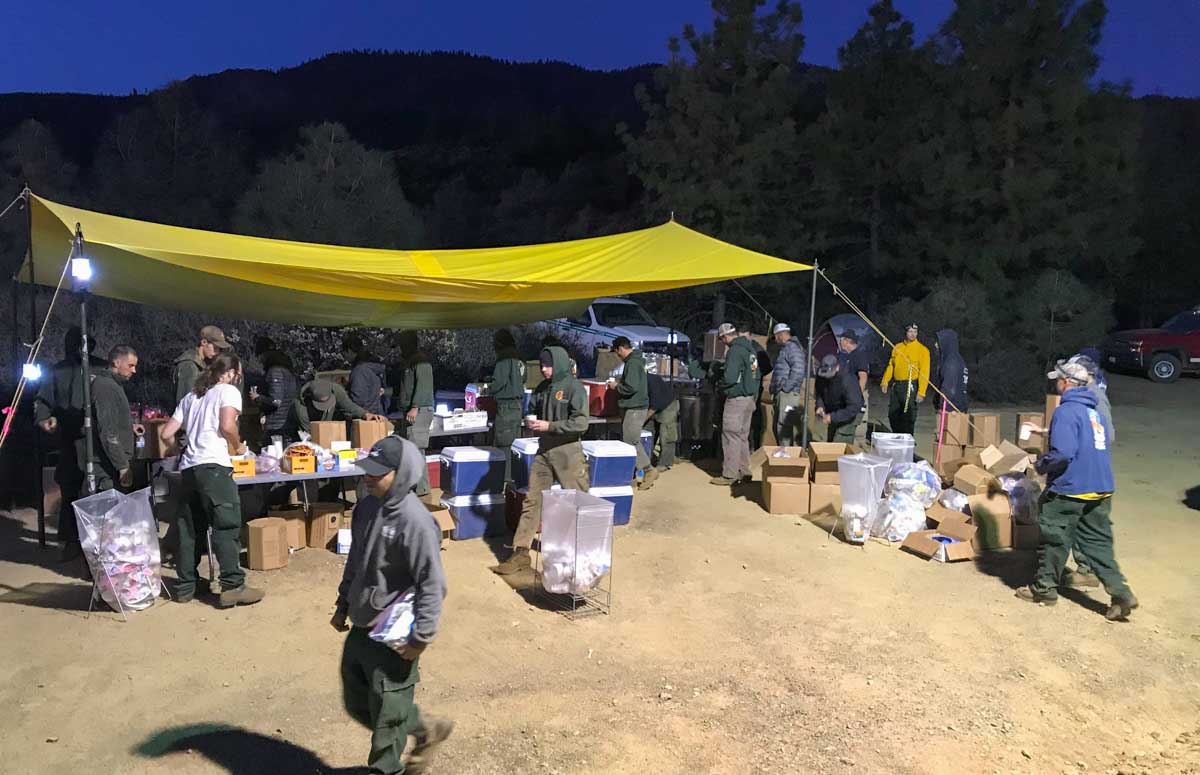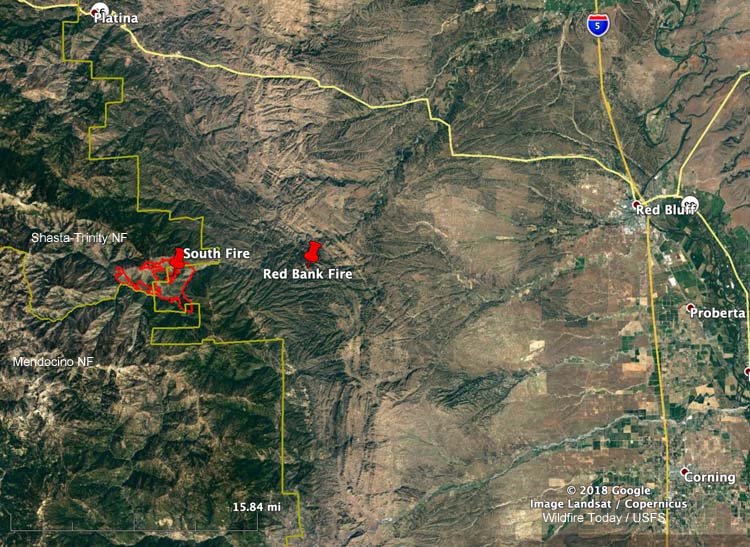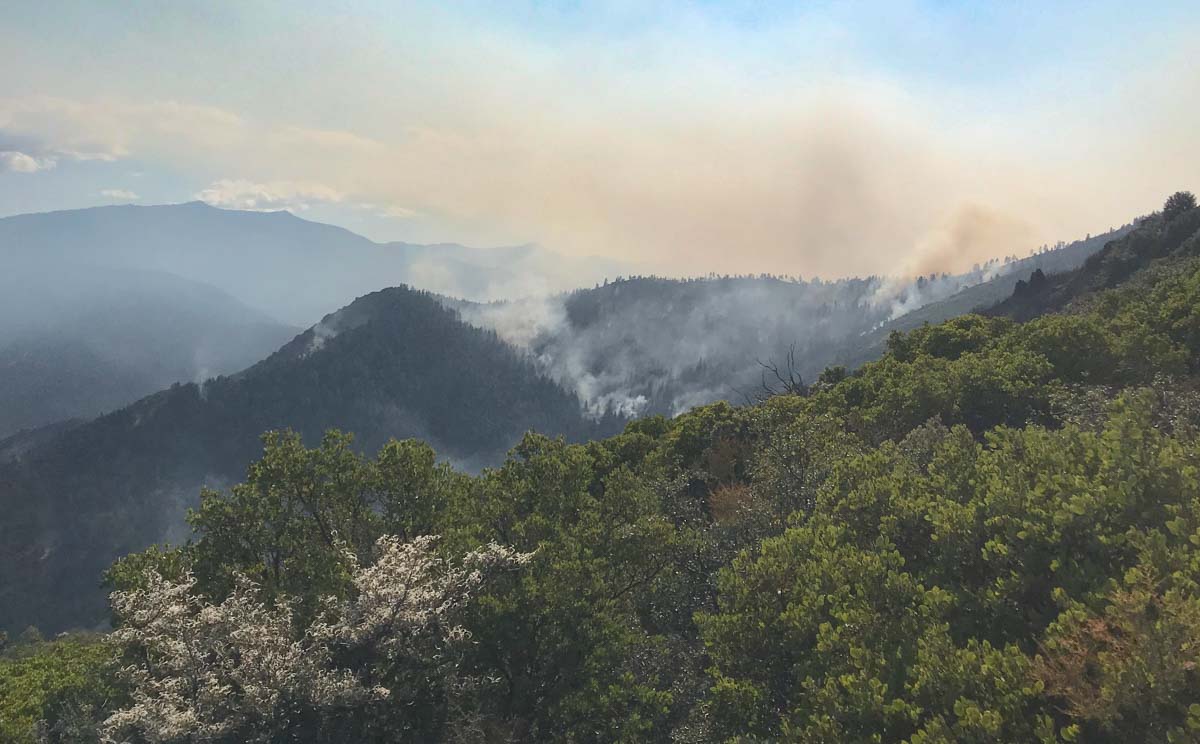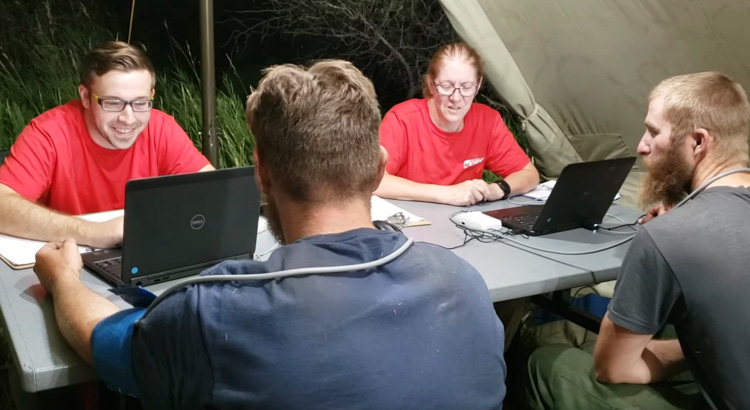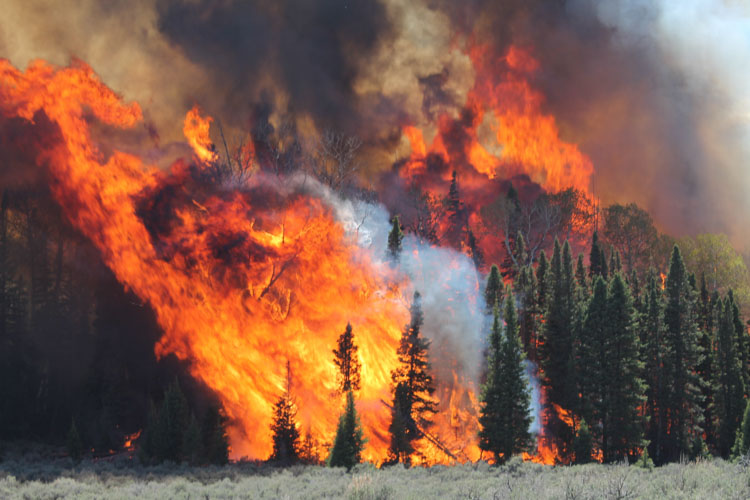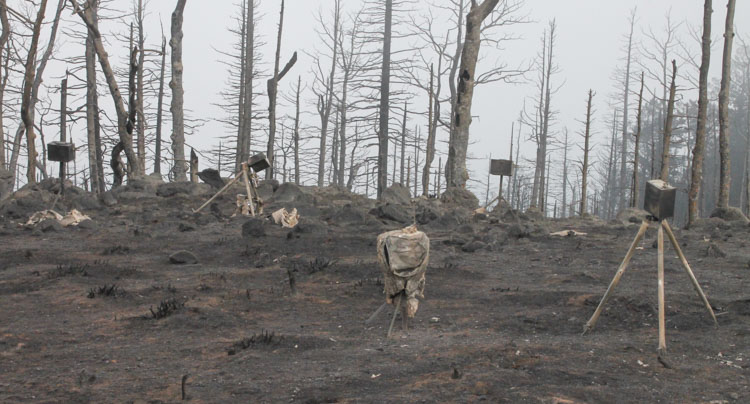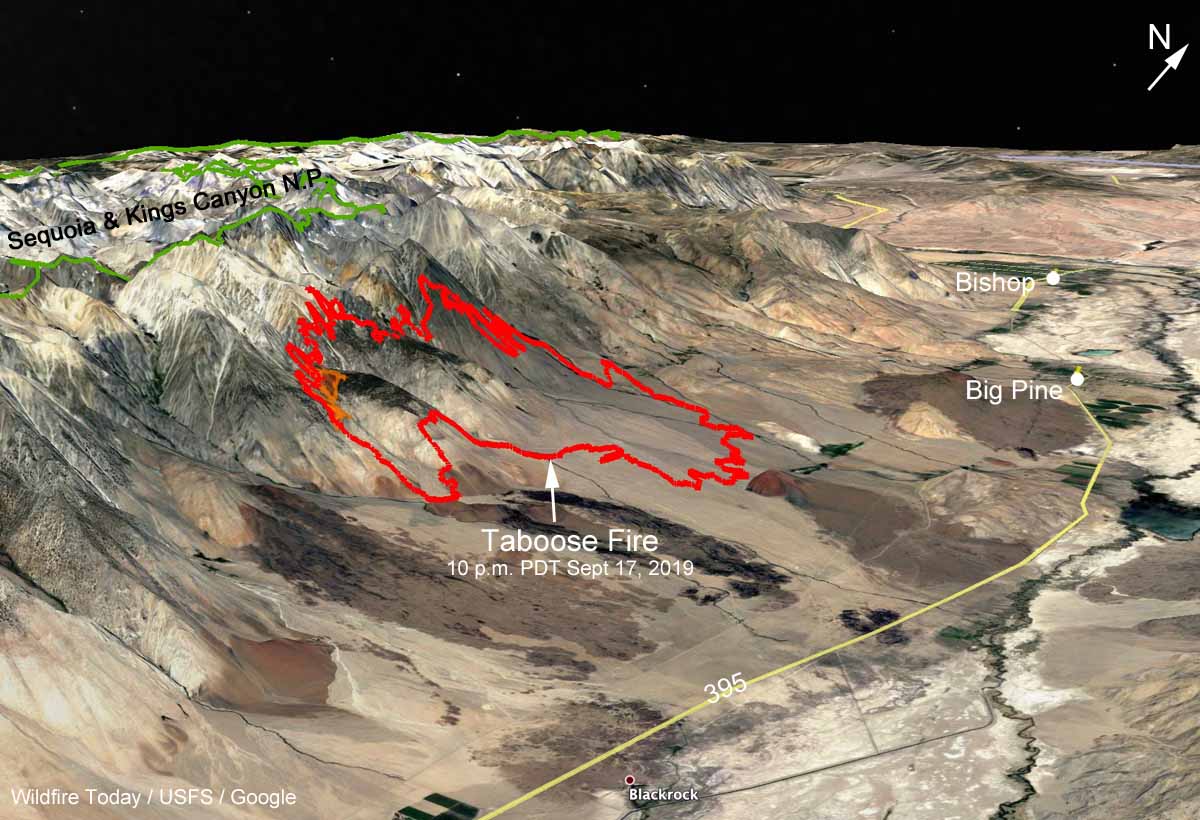
(9:16 a.m. PDT Sept. 18, 2019)
After burning 10,187 acres since it started September 4, the growth of the Taboose Fire on the east slope of the Sierras slowed Tuesday. A mapping flight found that the fire added another 174 acres primarily on the south side along Taboose Creek. Firefighters took advantage of lower winds Tuesday and continued to work on fire suppression and strengthening containment lines with crews on the ground assisted by helicopter water drops.
But 30 to 40 mph winds in the forecast for Wednesday and Thursday of this week could challenge firefighters, particularly on the south side in the Shingle Mill Bench area. The changing wind direction, which will shift about every 12 hours, will present even more headaches, coming from the south Wednesday, from the west Wednesday night, and out of the north Thursday and Thursday night. During this period the relative humidity at the base of the fire will be in the lower teens during the day. The wind event should be over by Friday. The area is under a Red Flag Warning until Thursday evening.
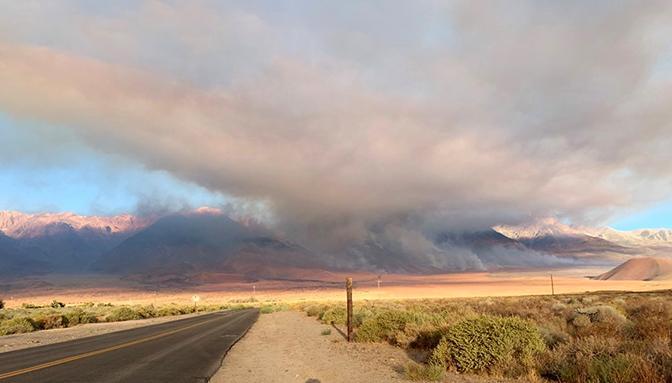
Most of the Taboose Fire is in the Inyo National Forest 7 miles south of Big Pine and 20 miles south of Bishop, California (see map above). It is burning on a steep slope, from 4,700 feet on the east side up to 10,000 feet on the west where it could be running out of fuel. The ridge top at 13,000 feet is also the eastern boundary of the Sequoia and Kings Canyon National Park.
Mt. Whitney, the highest point in the contiguous United States is 27 miles farther south on the ridge at an elevation of 14,505 feet.
Resources assigned to the fire include 12 hand crews, 24 fire engines, and 5 helicopters for a total of 575 personnel.

